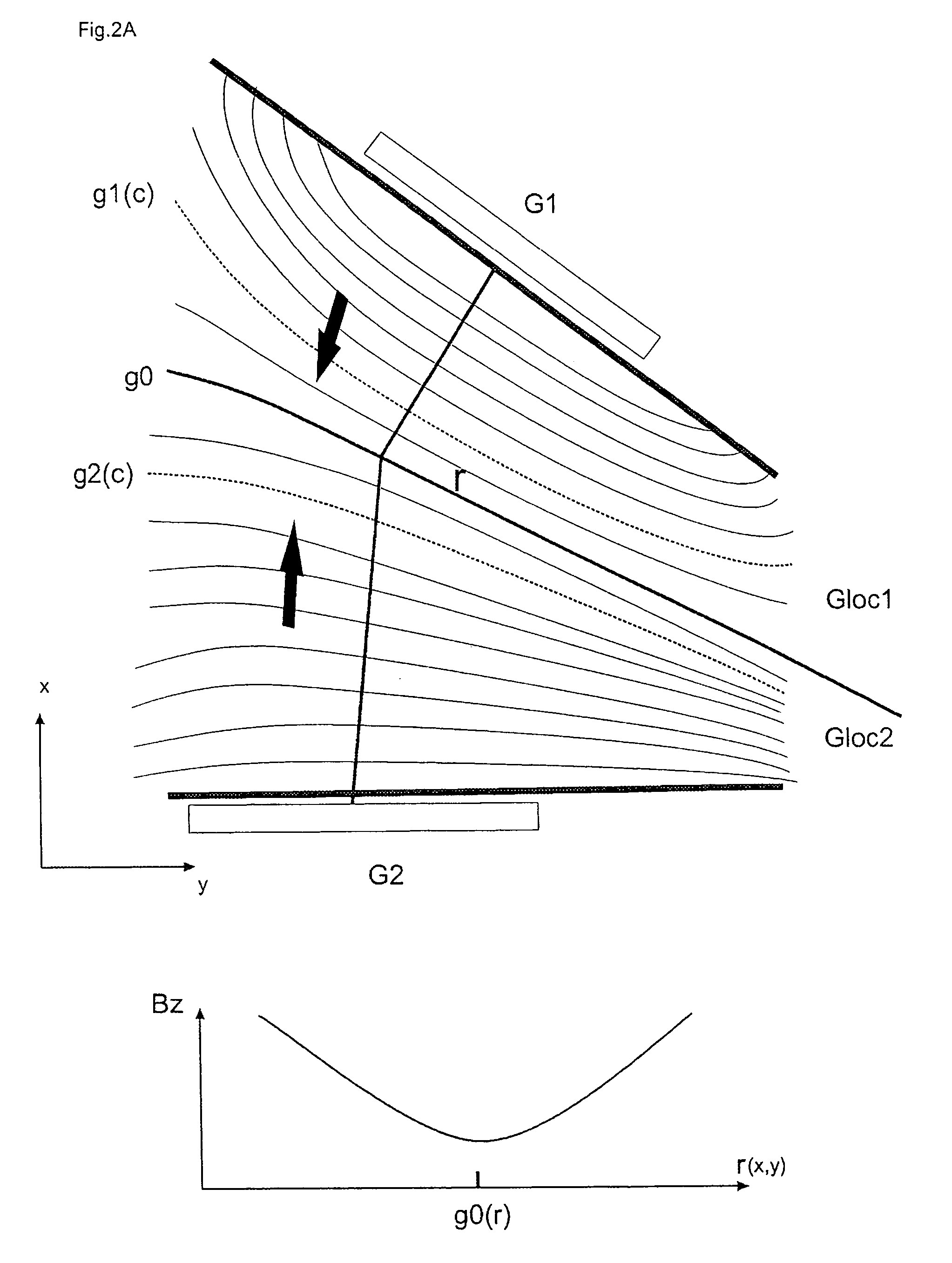Apparatus and method for NMR tomography acquisition with local magnetic field gradients in connection with local receiver coils
a technology of local magnetic field gradient and tomography acquisition, which is applied in the field of magnetic resonance tomography apparatus, can solve the problems of large differences in the magnetic field at the edge of the area to be imaged, substantial mechanical load, and large noise of typically 100 dba or more, and achieve the effect of fast switching times
- Summary
- Abstract
- Description
- Claims
- Application Information
AI Technical Summary
Benefits of technology
Problems solved by technology
Method used
Image
Examples
Embodiment Construction
[0057]The invention concerns a method of MR (magnetic resonance) tomography using temporally varying magnetic field gradients for local encoding. In conventional MRT methods, local encoding is realized by magnetic field gradients, wherein gradient systems with preferably spatially constant magnetic field gradient corresponding to a preferably linear change of the magnetic field strength along the respective spatial direction are preferentially used. Orthogonal gradient systems with gradients in the x, y, and z directions are generally used in this connection. Local gradient systems are also known and may also be used for local encoding, however, deviations from a linear distribution occur due to construction, which can be compensated for through corresponding distortion correction. These local gradients have no linear relation between the local field strength (and thereby the Larmor frequency) and the location of the signals caused by the excited spins either, but still a monotonic ...
PUM
 Login to View More
Login to View More Abstract
Description
Claims
Application Information
 Login to View More
Login to View More - R&D
- Intellectual Property
- Life Sciences
- Materials
- Tech Scout
- Unparalleled Data Quality
- Higher Quality Content
- 60% Fewer Hallucinations
Browse by: Latest US Patents, China's latest patents, Technical Efficacy Thesaurus, Application Domain, Technology Topic, Popular Technical Reports.
© 2025 PatSnap. All rights reserved.Legal|Privacy policy|Modern Slavery Act Transparency Statement|Sitemap|About US| Contact US: help@patsnap.com



